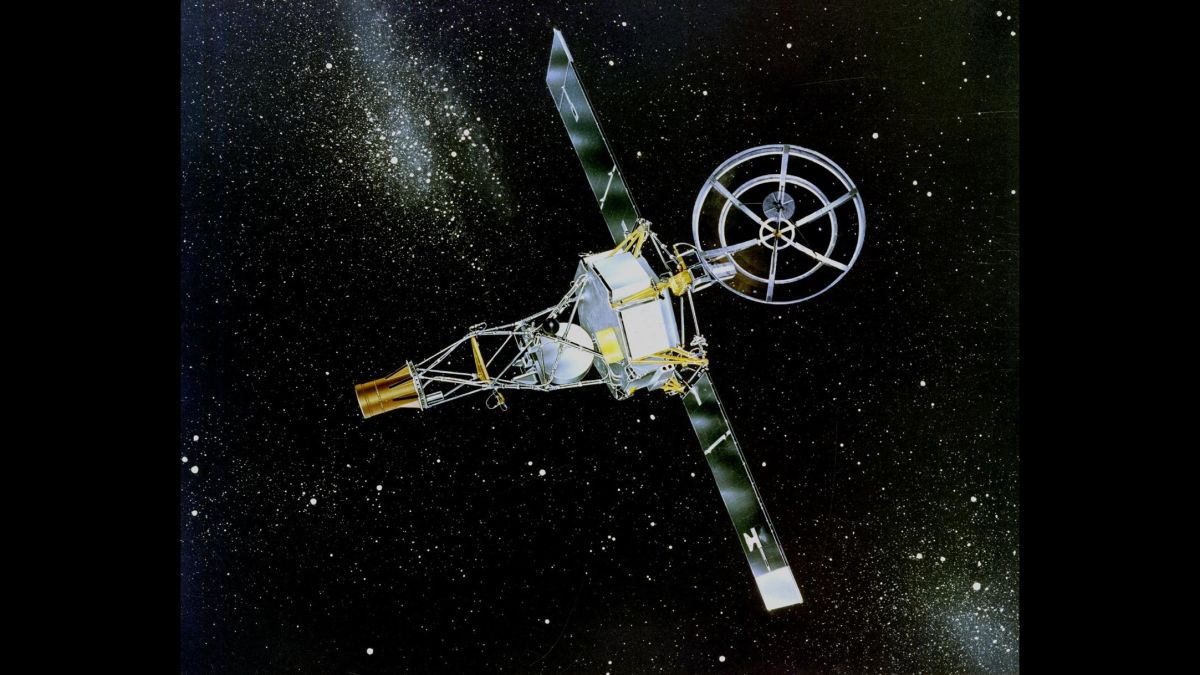
www.space.com
60 years ago today, a spacecraft zipped past planet Venus for the 1st time ever
On Dec. 14, 1962, a NASA spacecraft called Mariner 2 flew past Venus in the first-ever planetary flyby.
Science & Tech
Human-built spacecraft have been exploring other planets for a full 60 years.
On Dec. 14, 1962, a NASA spacecraft called Mariner 2 flew past Venus in the first-ever planetary flyby. The maneuver gave the spacecraft 42 minutes to observe what scientists now consider Earth's hellish twin — whose hidden surface at the time was thought to be lush, tropical jungle or swamp.
Data from Mariner 2 instead showed that even the night side of Venus was scorching, with surface temperatures as hot as 421 degrees Fahrenheit (216 degrees Celsius), according to NASA. Scientists already knew about Venus' super-slow spin (a day on Venus lasts about 243 Earth days), but had expected the day and night sides of the planet to show a much larger temperature difference than Mariner 2 found.
At the time, agency officials wrote that the Mariner 2 data painted an image of "a glowing hot earth covered by thin, dark and cool clouds," according to the New York Times.
Mariner 2 followed its twin and predecessor to the launch pad just a month after the failed launch of Mariner 1 in July 1962. Range personnel exploded Mariner 1 less than five minutes after launch because the booster was off course and expected to crash, according to NASA.
But the launch of Mariner 2 went smoothly, and despite hiccups along the way, the probe endured its three-and-a-half-month trek to Venus. In addition, that journey allowed Mariner 2 to confirm the existence of the solar wind, the constant stream of charged particles flowing off the sun, and observe a major solar flare, according to NASA.
During the Venus flyby, Mariner 2 used its seven instruments to study both the day and night sides of the planet. In addition to measuring the planet's temperature, Mariner 2 detected the thick layer of clouds in its middle atmosphere; scientists now know those clouds are mostly sulfuric acid.
Although Mariner 2 made the first planetary flyby, it wasn't the first spacecraft to zip past another object in our solar system. That honor goes to the Soviet Union's Luna 1 mission, which flew past the moon in 1959.
Venus was a common destination for both the U.S. and the Soviet Union from the 1960s into the early 1980s before its popularity began to fade. Currently, only one spacecraft is dedicated to Venus, Japan's Akatsuki mission that has been in orbit around the planet since 2015.
But the solar wind has returned the favor, so to speak. Both NASA's Parker Solar Probe and the European Space Agency's (ESA) Solar Orbiter are observing Venus as they make flybys to adjust their trajectories and venture closer to the sun.
And Venus is back on the agenda in a major way. NASA has committed to the DAVINCI and VERITAS missions, and ESA to the EnVision mission, all of which will explore the planet in the 2030s.
























































